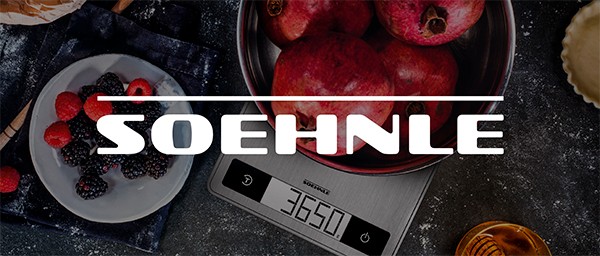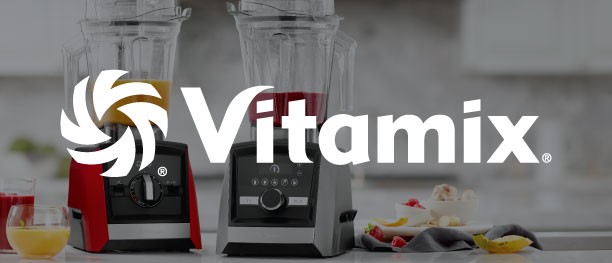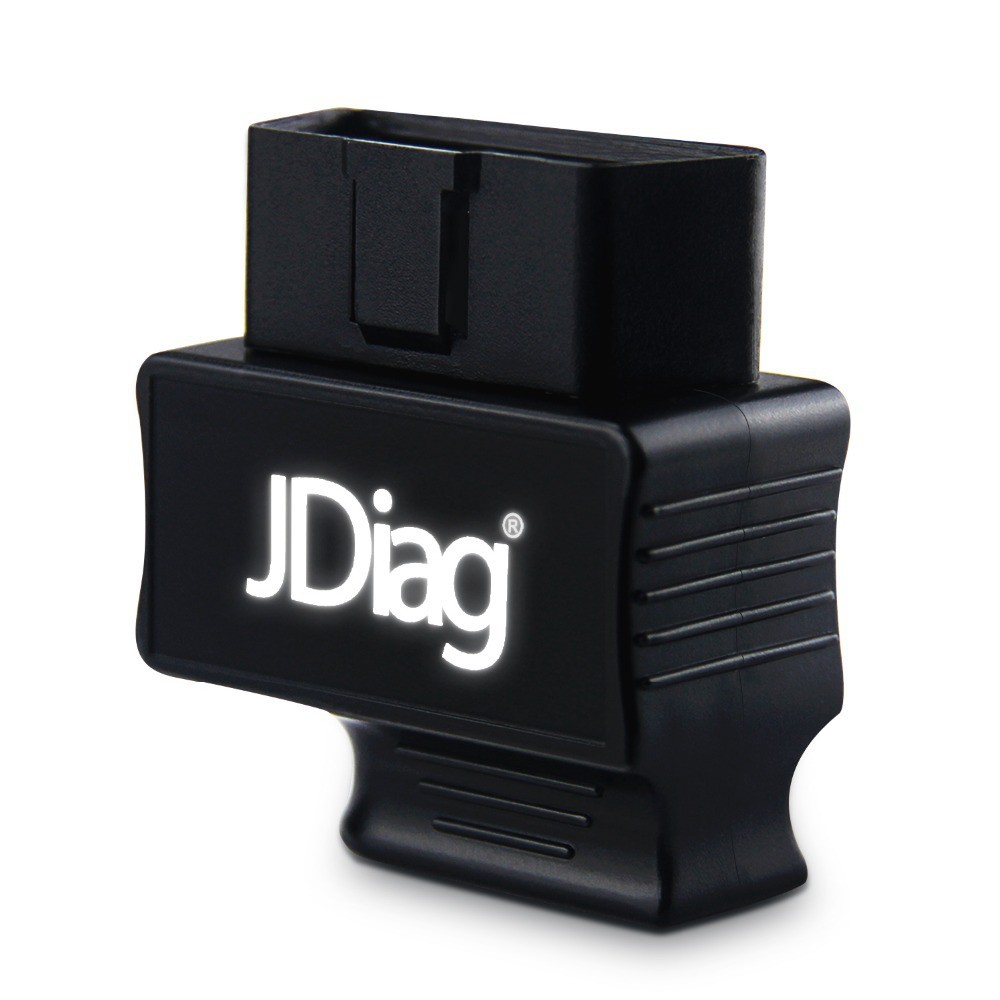
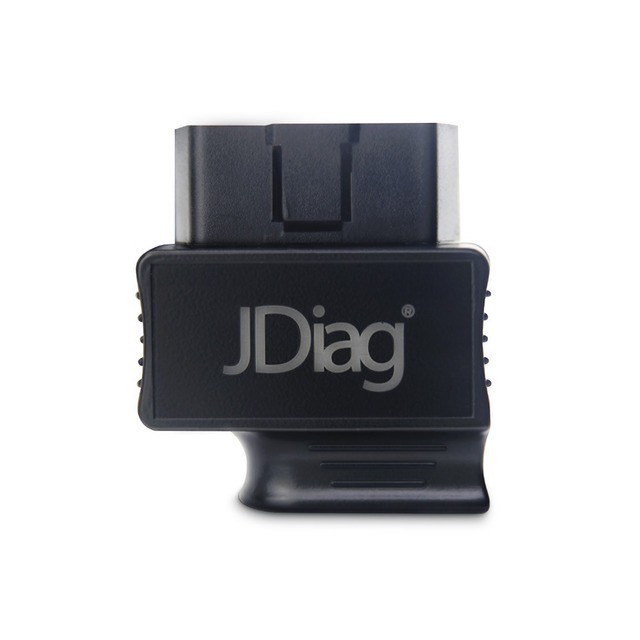
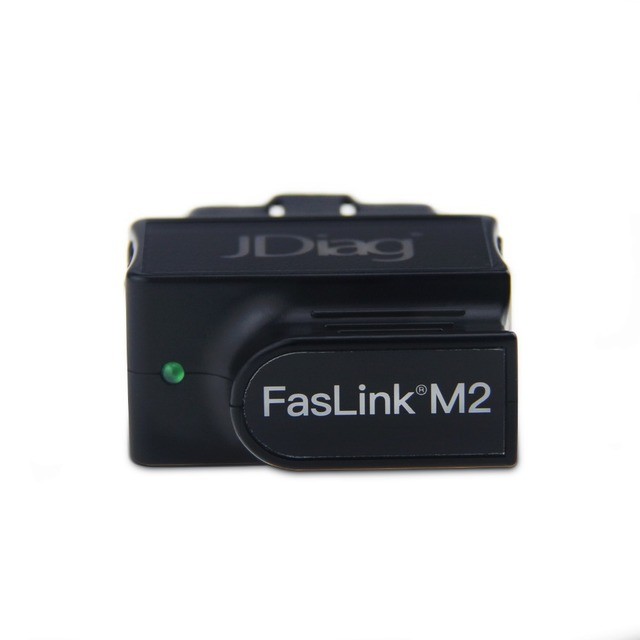
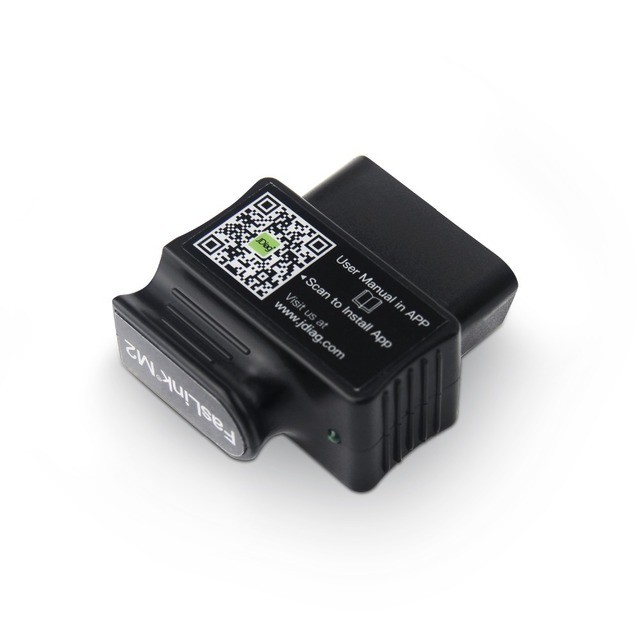
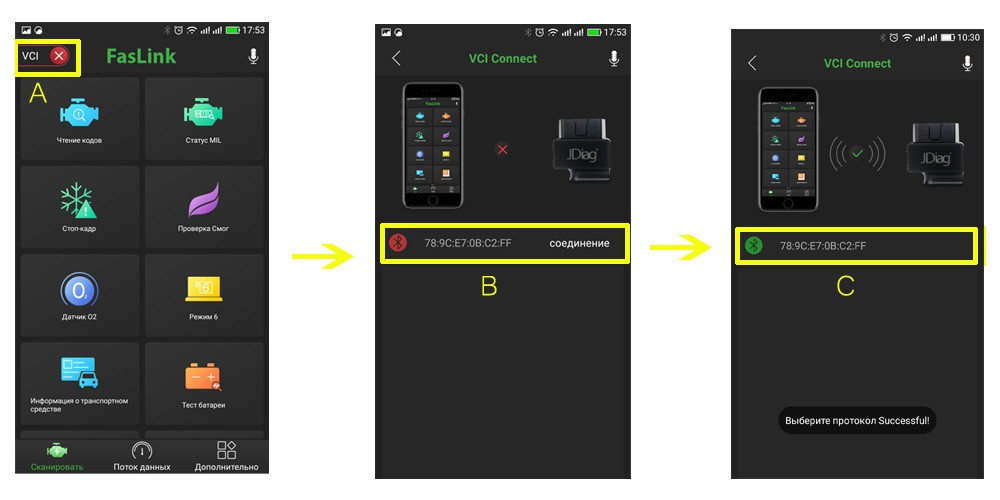
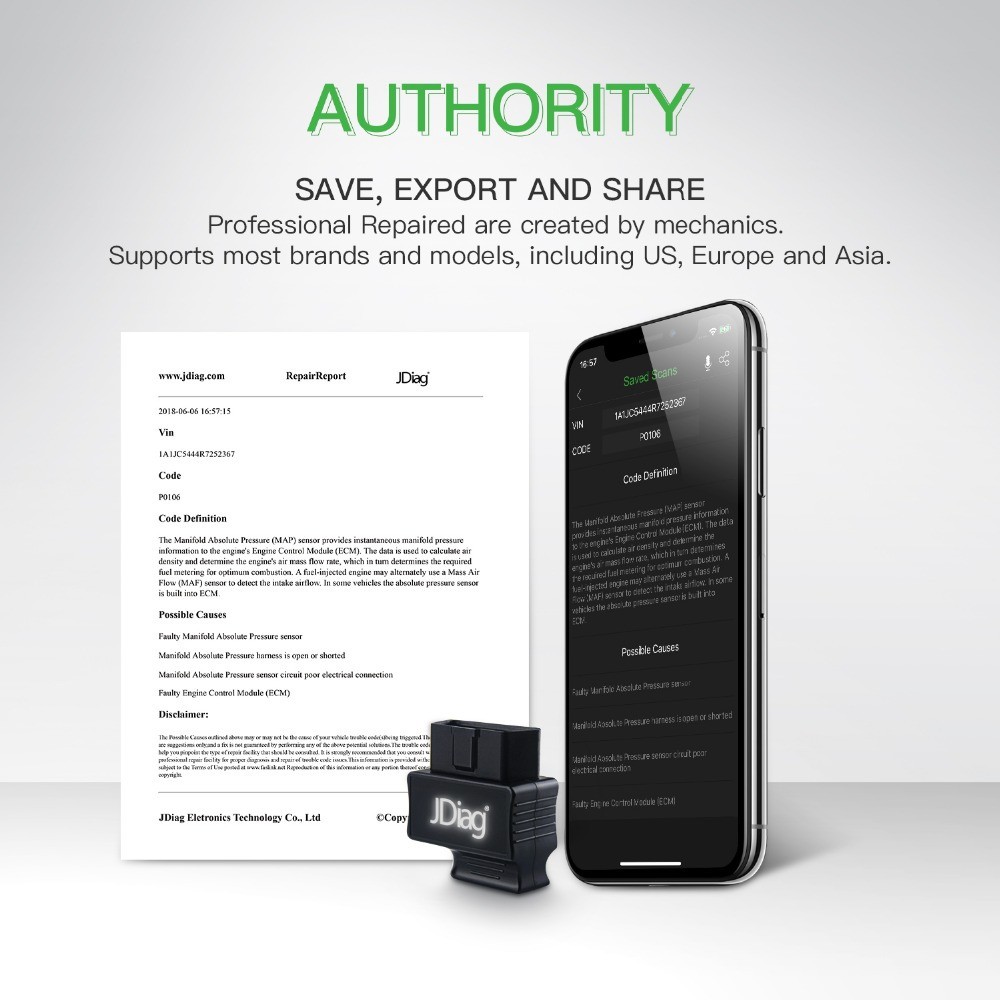
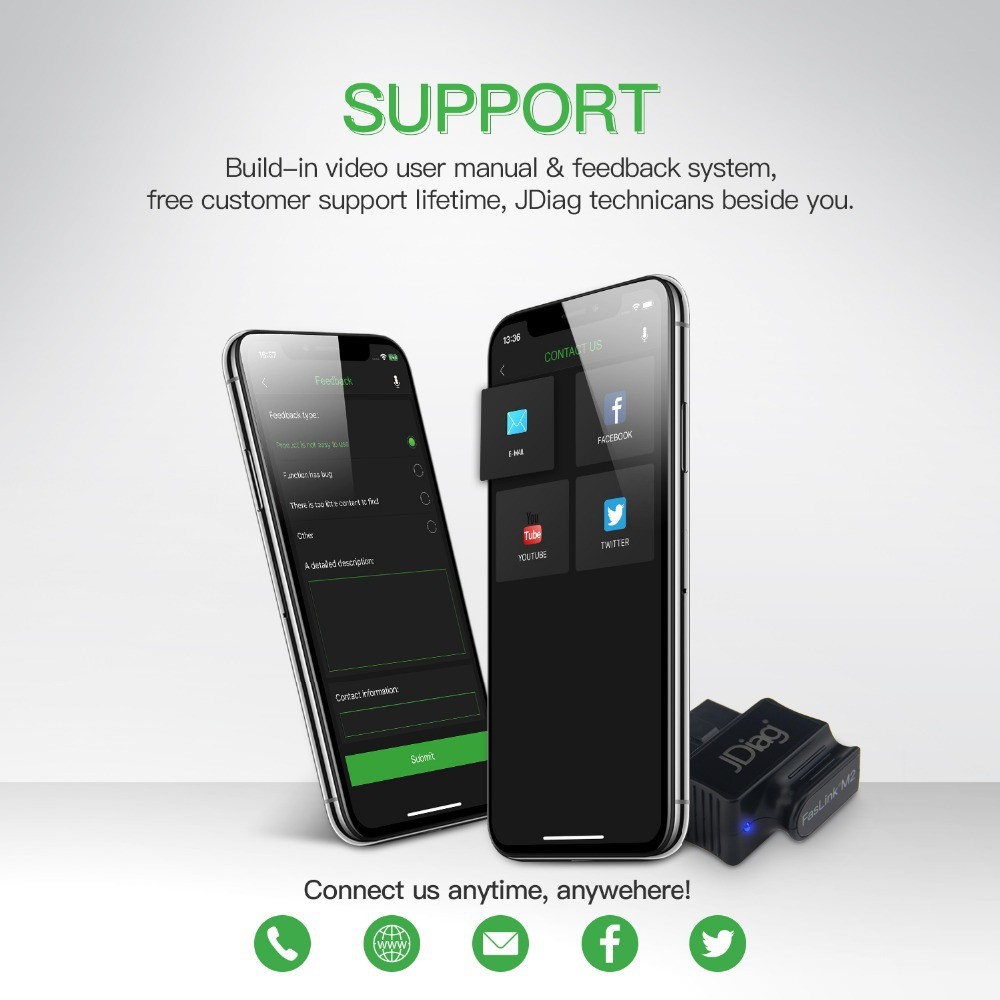
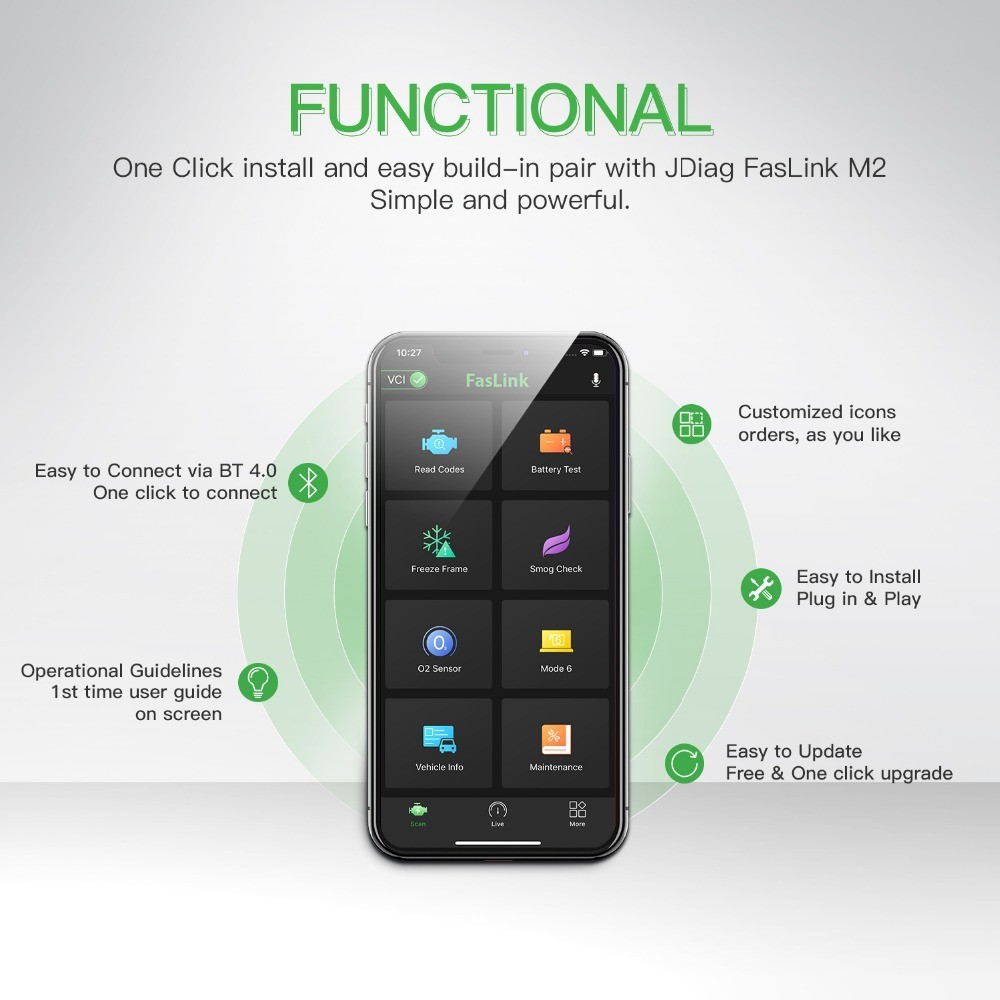
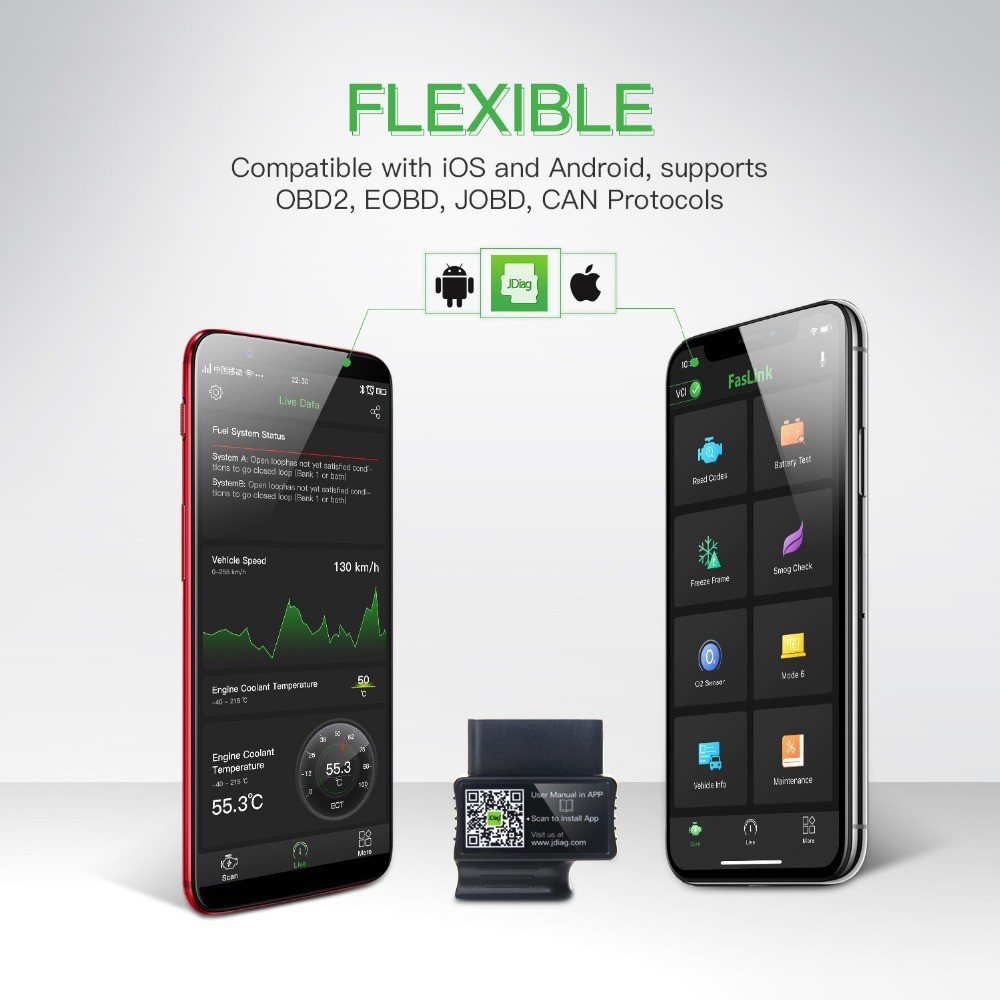
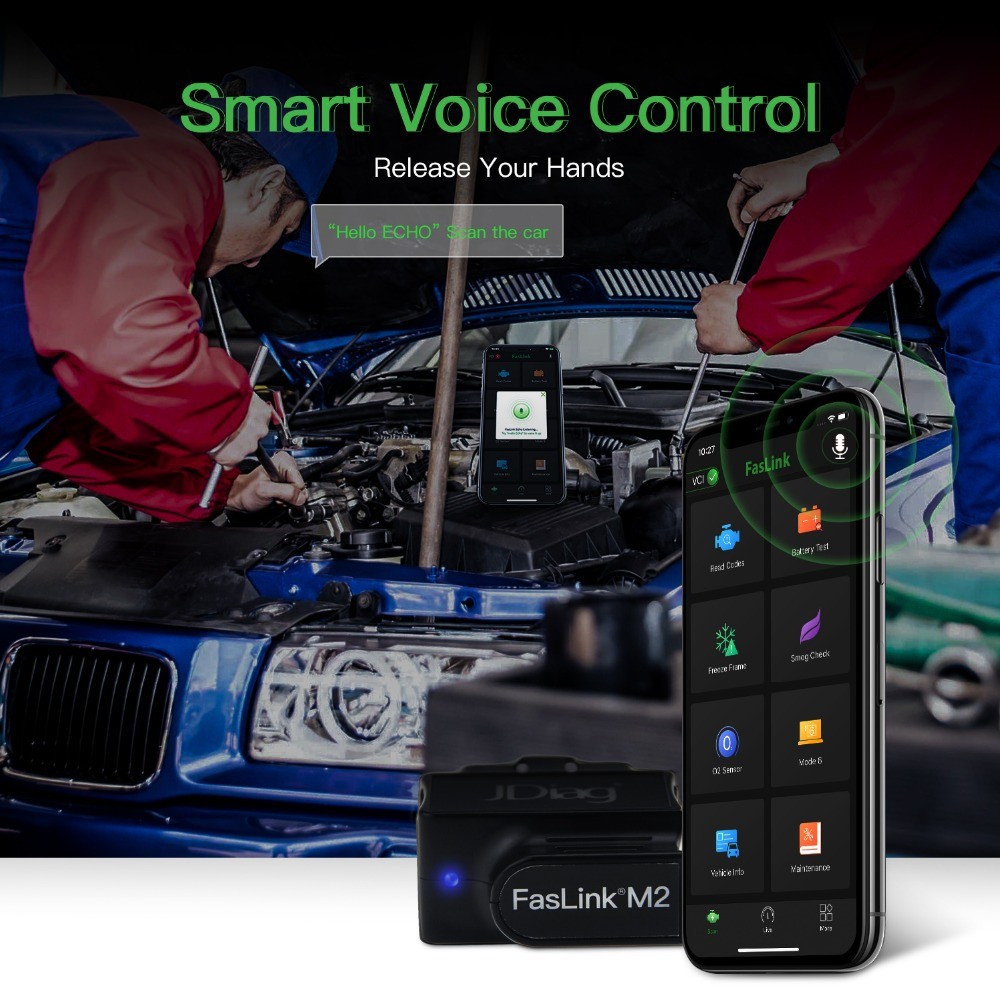
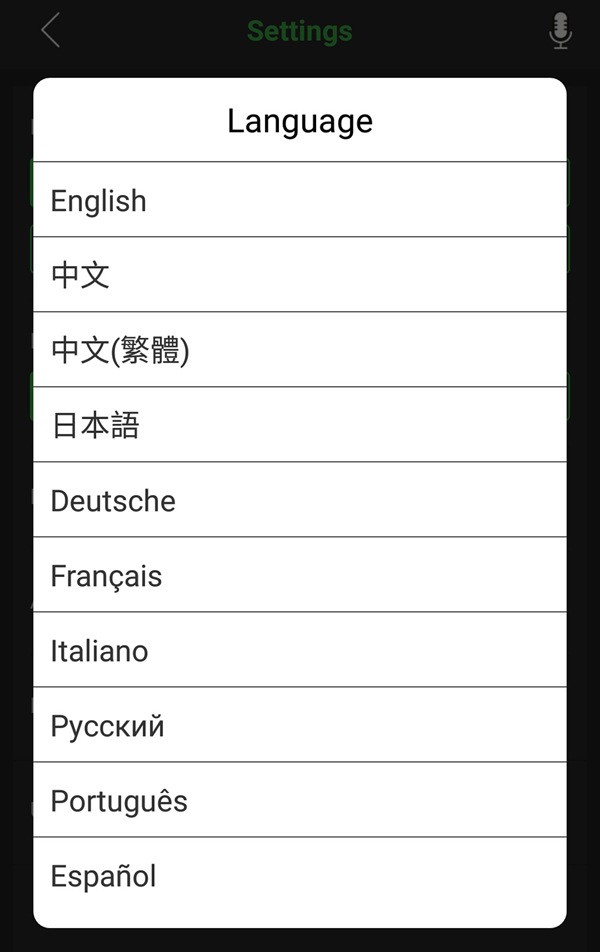
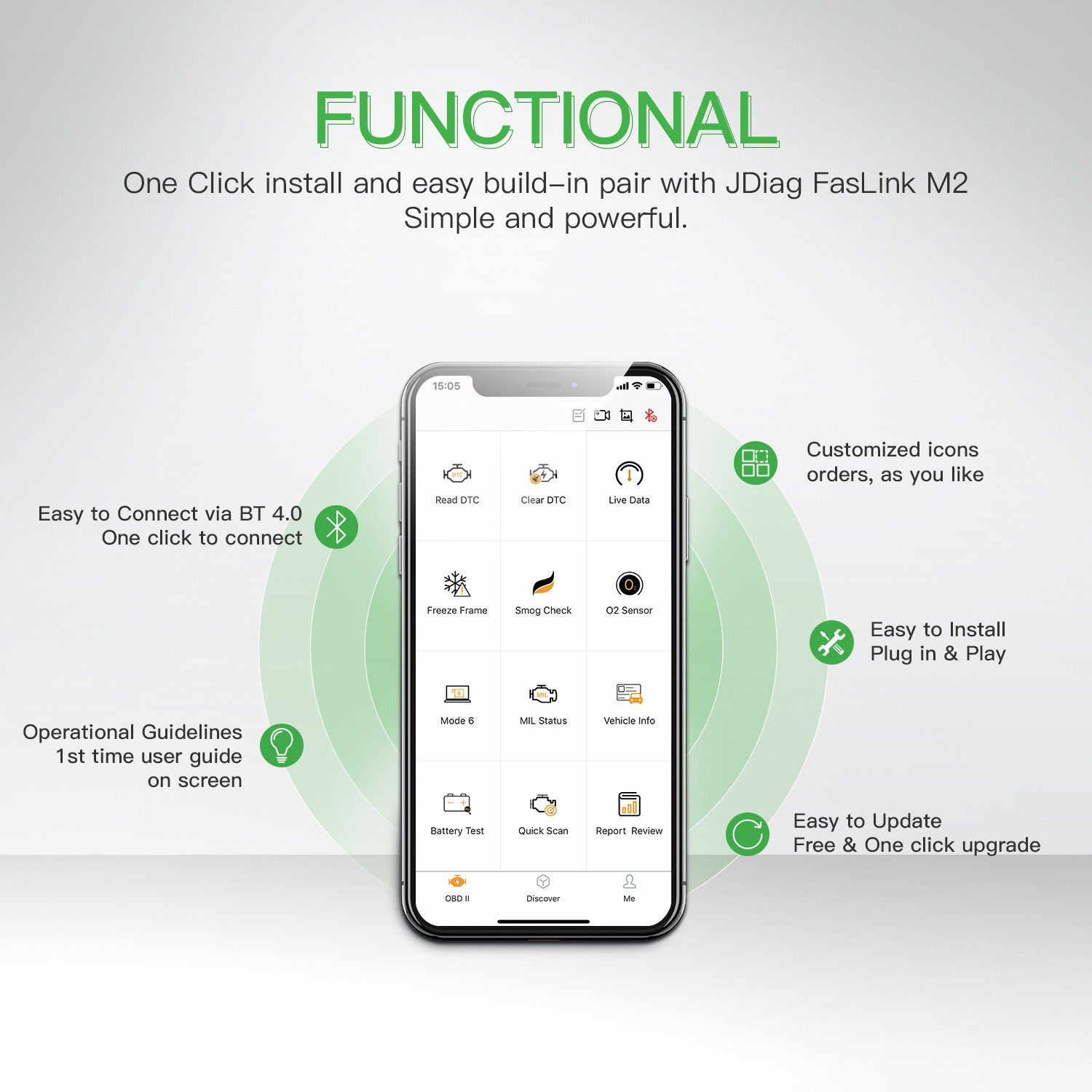
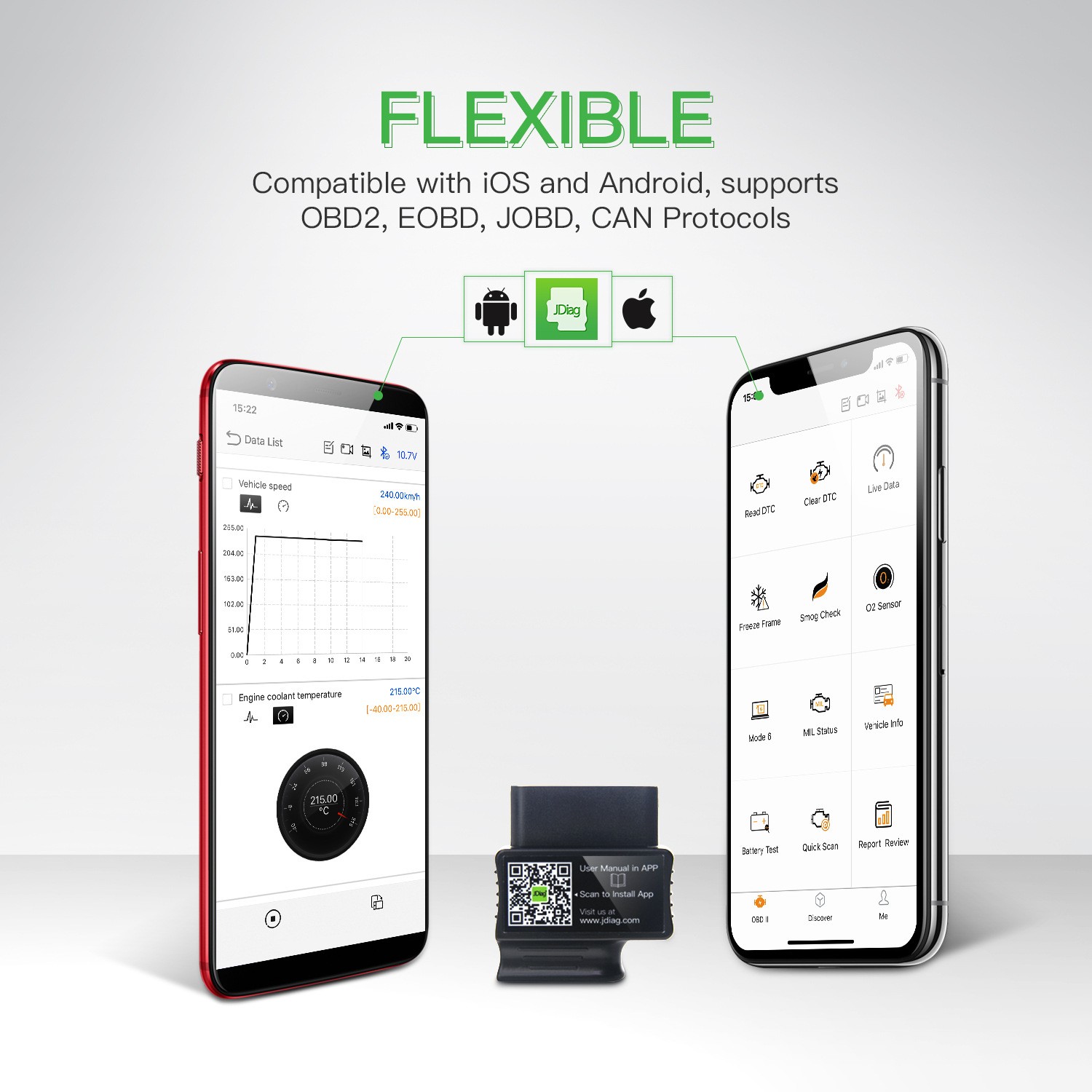
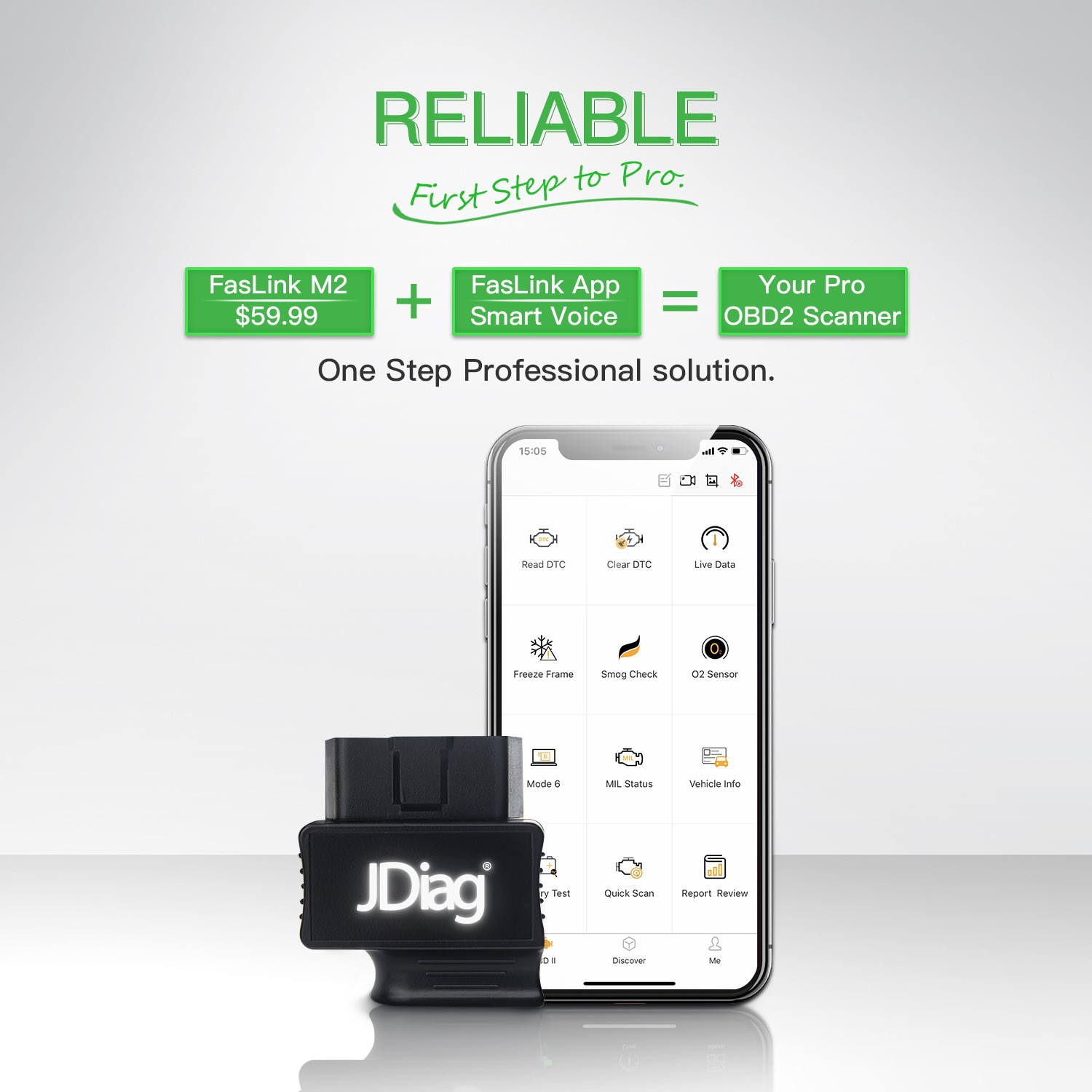
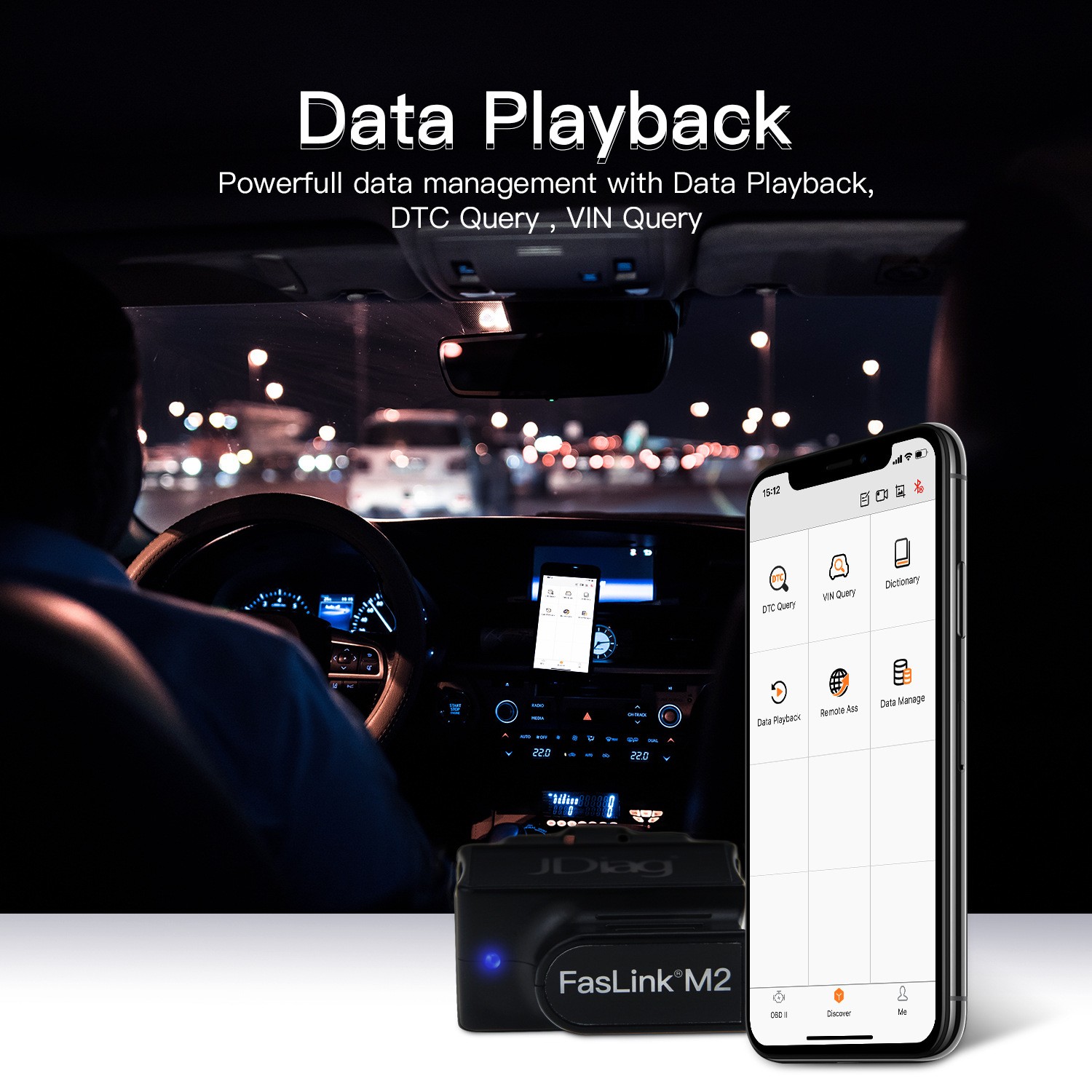
OBDII Code Reader Automotive Diagnostic Scanner
Approx $73.67 USD
OBDII Code Reader Automotive Diagnostic Scanner
Comprehensive and User-Friendly Vehicle Diagnostics
The OBDII Code Reader Automotive Diagnostic Scanner is an essential tool for detecting, diagnosing, and troubleshooting vehicle issues. Designed for both professionals and DIY enthusiasts, this scanner reads and clears diagnostic trouble codes (DTCs), provides live data, and offers valuable insights into your vehicle’s performance. Compact, easy to use, and compatible with most OBDII-compliant vehicles, it’s a must-have device for maintaining vehicle health and efficiency.
Key Features of the OBDII Code Reader Diagnostic Scanner
1. Full OBDII Compatibility
- Works with all OBDII-compliant vehicles (1996 and newer in the U.S., 2000 and newer in Europe, and most modern Asian models).
- Supports major protocols, including CAN, ISO9141, J1850 PWM, J1850 VPW, and KWP2000.
2. Read and Clear DTCs
- Retrieves generic and manufacturer-specific diagnostic trouble codes.
- Provides on-screen definitions of codes for easy interpretation.
- Clears error codes and resets the check engine light after repairs.
3. Live Data and Freeze Frame
- Displays real-time sensor data, including RPM, fuel efficiency, engine temperature, and oxygen sensor outputs.
- Captures freeze frame data to analyze the conditions under which a fault occurred.
4. Emission Readiness Check
- Verifies the vehicle’s readiness for emissions testing by checking monitors like the catalytic converter and O2 sensors.
- Ensures compliance with environmental regulations.
5. User-Friendly Interface
- Equipped with a clear LCD or color display for easy reading of data.
- Intuitive navigation buttons or touchscreen controls simplify operation.
6. Compact and Portable
- Lightweight design makes it easy to carry and store.
- Plug-and-play functionality allows for quick setup and use.
7. Multilingual Support
- Supports multiple languages, making it accessible for users worldwide.
8. Durable Construction
- Built with robust materials to withstand regular use in workshop environments.
9. Optional Features (Depending on Model)
- Wireless connectivity (Bluetooth or Wi-Fi) for use with smartphones and apps.
- Advanced functions like ABS, SRS, and transmission diagnostics in higher-end models.
Benefits of the OBDII Diagnostic Scanner
1. Quick and Accurate Diagnostics
- Save time by pinpointing issues with your vehicle in seconds.
- Avoid unnecessary trips to the mechanic by diagnosing and addressing minor problems at home.
2. Improved Vehicle Performance
- Monitor engine health and performance metrics in real-time, allowing for proactive maintenance.
3. Cost-Effective Maintenance
- Reduce repair costs by identifying and resolving issues early.
- Reset check engine lights after DIY repairs.
4. Versatile Applications
- Suitable for a wide range of vehicles, including cars, SUVs, trucks, and hybrids.
How to Use the OBDII Diagnostic Scanner
-
Connect to the Vehicle
- Locate the OBDII port, usually under the dashboard near the steering wheel.
- Plug the scanner into the port.
-
Power On
- Turn on the vehicle’s ignition and the scanner.
- Follow the on-screen instructions to navigate the menu.
-
Retrieve Codes
- Select the “Read Codes” option to view active or stored trouble codes.
- Refer to the scanner’s built-in database for code definitions.
-
Analyze Data
- Use live data or freeze frame features to identify performance issues.
- Check emission readiness for compliance testing.
-
Clear Codes
- After resolving issues, use the “Clear Codes” option to reset the check engine light.
-
Update Software
- Connect the scanner to a computer or use wireless updates (if available) to ensure compatibility with newer vehicles.
Ideal For:
- DIY Car Enthusiasts: Empower yourself to diagnose and fix vehicle problems at home.
- Professional Mechanics: Enhance your diagnostic capabilities with advanced tools.
- Fleet Managers: Monitor and maintain multiple vehicles efficiently.
- Emission Compliance: Verify readiness for smog tests and reduce environmental impact.
JDiag OBD2 Code Reader Bluetooth 4.0 FasLink M2 Phone Diagnostic Tool PK Blue Driver EasyDiag Auto Scanner for iPhone Android
Features:
Read and Clear CEL Codes: Confirmed, Pending, and Permanent for all makes.
FasLink Echo: Control the software app by voice, release your hands.
Repair Reports: Code Definition, Possible Causes, Reported Fixes (Vehicle-specific for each DTC).
Freeze Frame: Vehicle snapshot when a code is stored.
Smog Check: See if the vehicle is ready for a smog test.
Mode 6: Advanced test results (like misfire counts).
Live Data: Display multiple PIDs as a graph, gauge, or digital readout (or export the log to a file).
Oxygen Sensor: Check the vehicle O2 sensor values.
Maintenance database: Large useful maintenance data (TPMS Reset, Service Light Reset, Oil Reset, Bake Reset).
DTC Lookup: Build-in dictionary over 300,000 DTC codes and increasing.
Advance Features:
-
1. FasLink M2 is the 1th Smart Voice OBD2 Bluetooth Scanner in the world. Helps you talk to the mechanic or gives you detailed information
on your error codes of possible caused reason.
2. Bluetooth 4.0 high-speed communication transmission and multi-end connections. Loaded seamlessly, make a great pair and connects flawlessly on your IOS and Android devices. Constantly being improved and updated to extended scans and database possible fixes.
3. Share professional PDF format diagnostic report to anyone or XML format Live data to show each PIDs value in the past.
4. Equipment with 16 pins OBD2 port which works on most car (JAPAN, CANADA, US, EU, etc.) after 2000 year till now.
5. 8 Languages selectable :German, Italian, French, Spanish, English, Russian, Portuguese, Japanese.
6. FasLink M2 hardware with screw-less assembly, logo LED indicator, non-slip design shell with environmentally friendly solder paste material, industrial designs with smaller size to ensure healthy, safety, beauty and easy to carry.
7. Diverse data flow display interface, self-defined PID expression and color.
Supports all OBD2 protocols including:
SAE J1850 PWM
ISO9141-2
ISO 1430-4 KWP
SAE J1850 VPW
and ISO 15765-4 CAN -






The product may be provided by a different brand of comparable quality.
The actual product may vary slightly from the image shown.







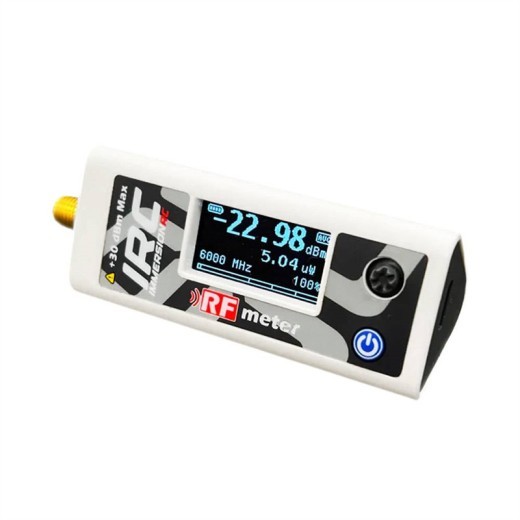
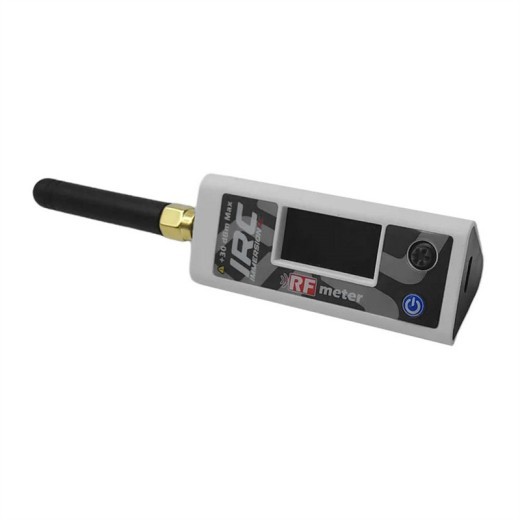
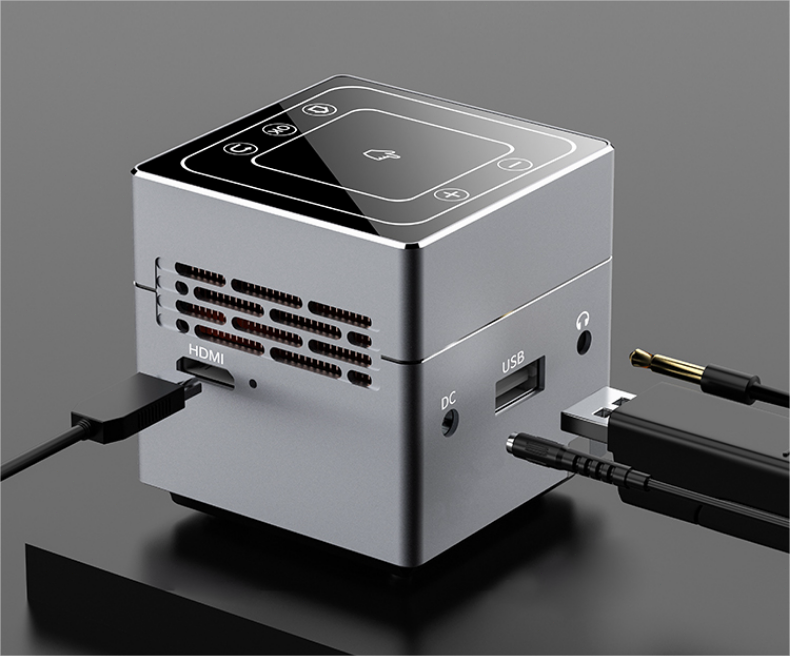
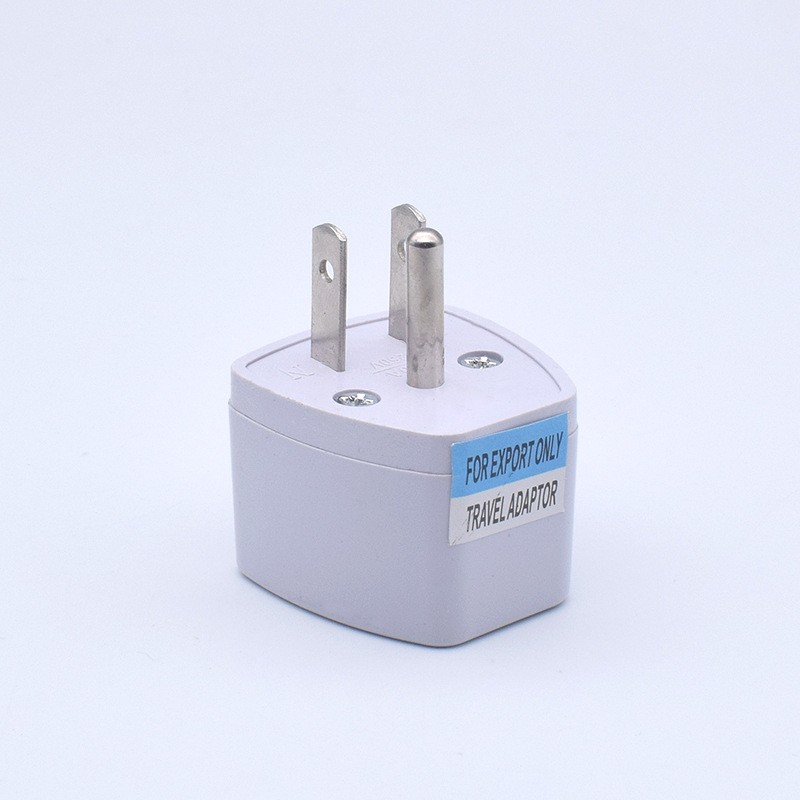


.webp)
.webp)



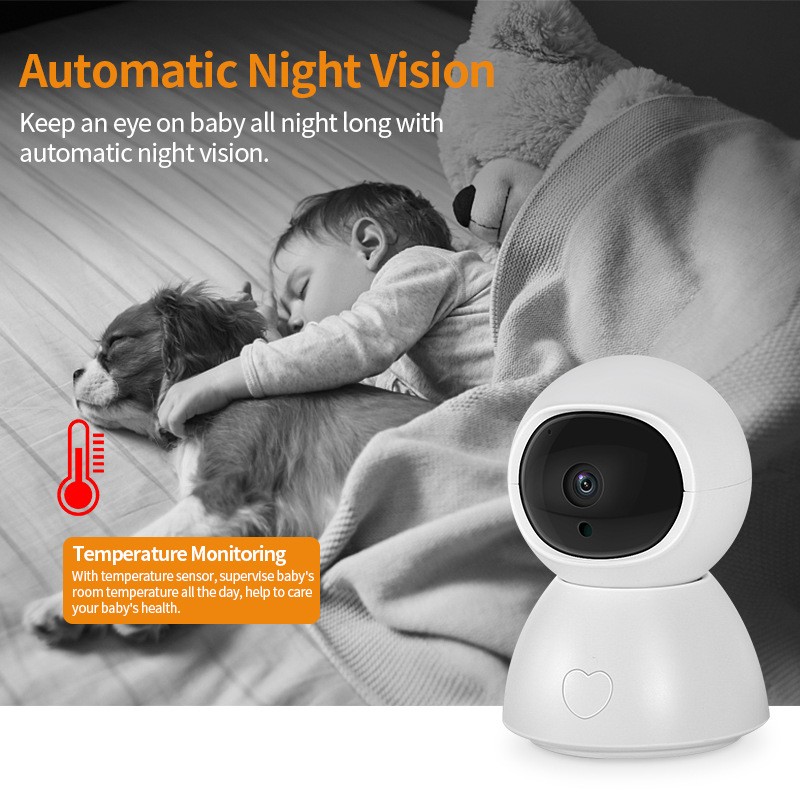
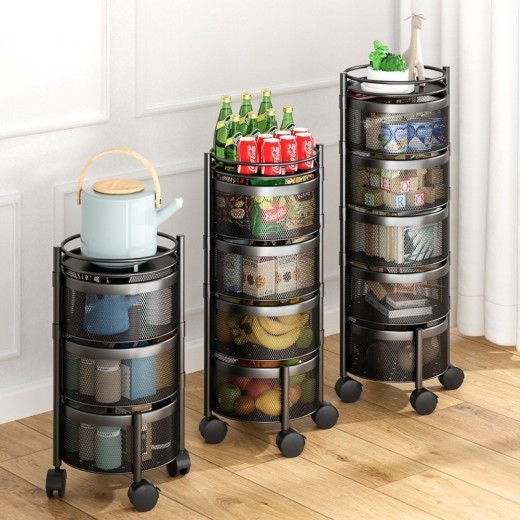
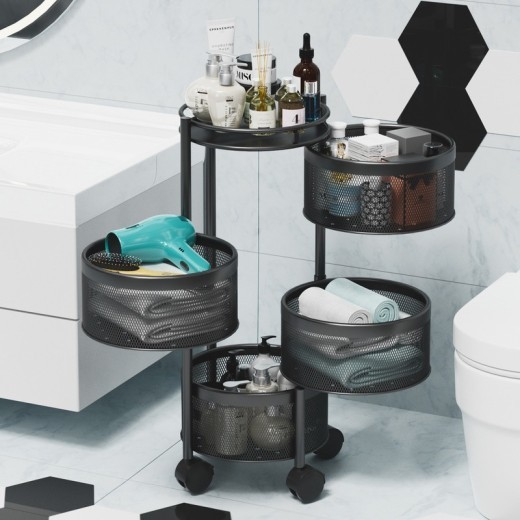
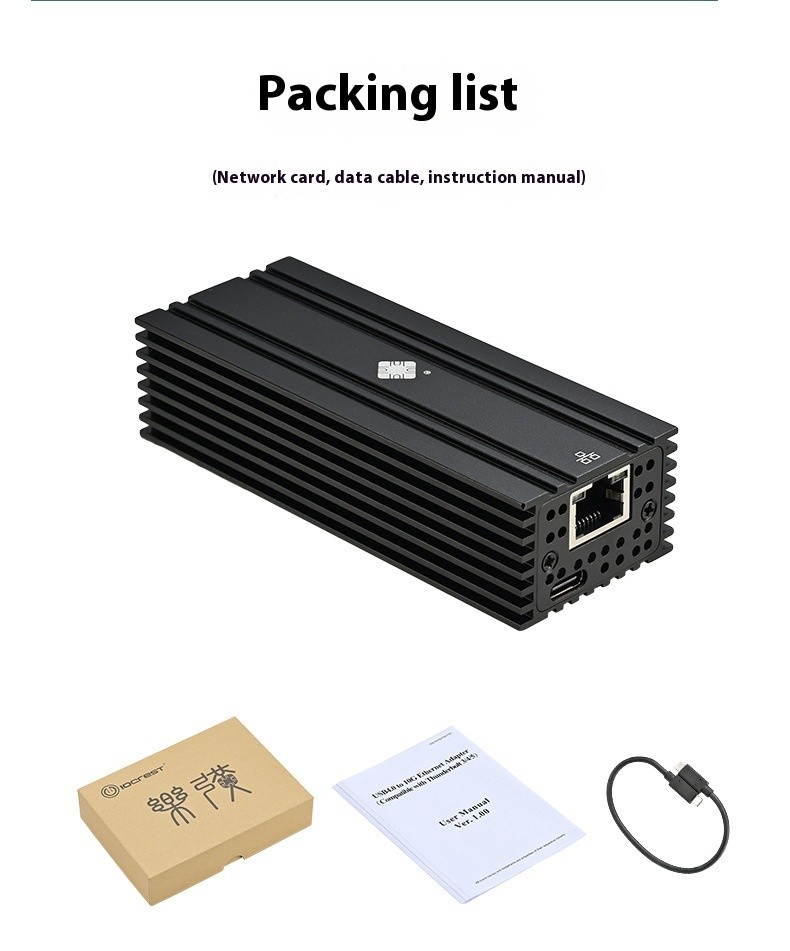
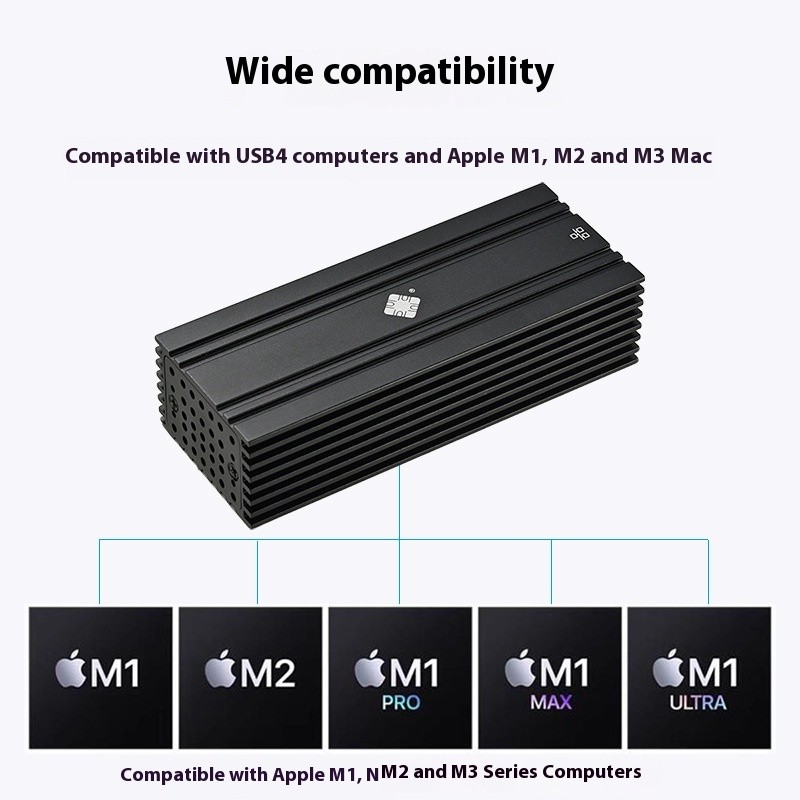


.jpg)









.jpg)





.jpeg)





.jpeg)



.jpeg)








.jpeg)



.jpeg)

.jpeg)

.jpeg)

.jpeg)
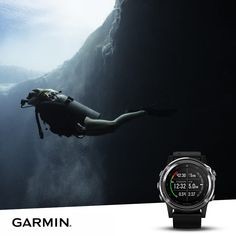



.jpeg)
.jpg)

.jpeg)






.jpeg)
.jpeg)




.jpeg)





.jpeg)


.jpeg)

.jpeg)

.jpeg)

.jpeg)







.jpeg)
.jpeg)
.jpeg)





.jpeg)



.jpeg)






.jpg)
.jpeg)









.jpg)


ulva-Logo.jpg)




.jpeg)



.png)

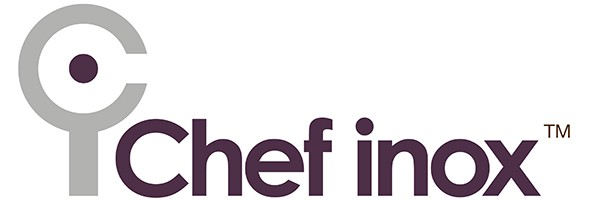

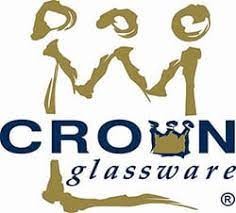


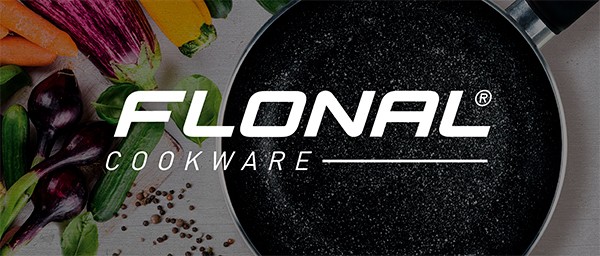






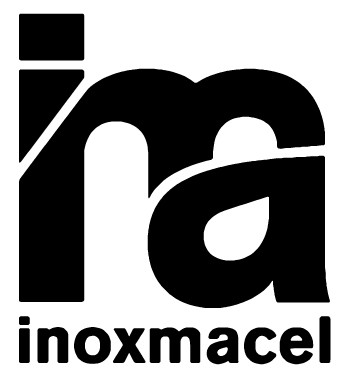
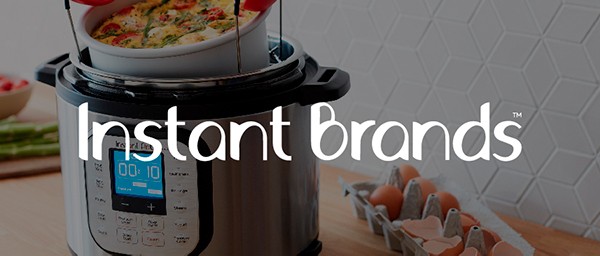
.png)












